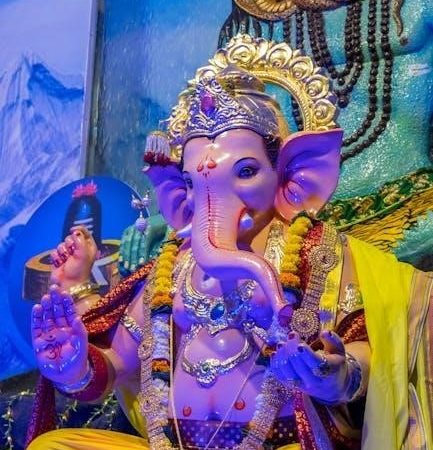Major Themes in “Lord of the Flies”
The novel explores the inherent darkness in human nature, contrasting civilization and savagery, while examining themes like leadership, morality, and the loss of innocence through the boys’ descent into chaos and fear.
Civilization vs. Savagery
The central theme of Lord of the Flies is the conflict between civilization and savagery, exploring how human nature gravitates toward primal instincts when societal constraints are removed. The novel symbolizes this struggle through the conch shell, representing democracy and order, and its eventual destruction, marking the collapse of civilization. Ralph embodies civilization, advocating for rules and structure, while Jack’s obsession with hunting and power symbolizes the descent into savagery. The boys’ fear of the “Beast” and their ritualistic dances reflect their gradual abandonment of moral values. Golding illustrates that savagery is inherent in humans, emerging when external controls fade. The island serves as a microcosm, showing how quickly chaos replaces order when primal desires dominate. This theme underscores Golding’s pessimistic view of human nature, highlighting the fragile boundary between civility and brutality.

Loss of Innocence
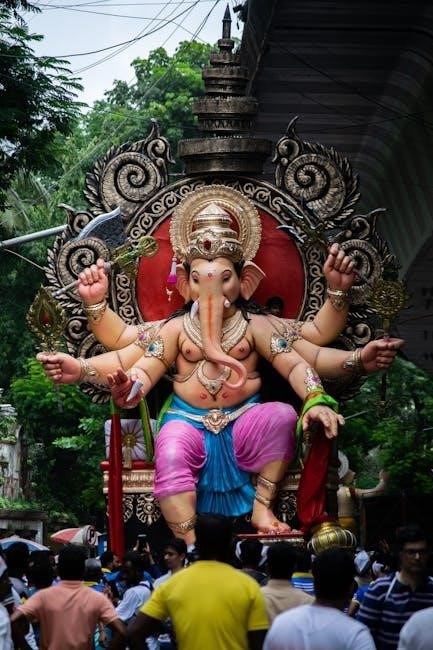
The loss of innocence is a profound theme in Lord of the Flies, as the boys’ isolation on the island strips them of their childhood naivety. Initially, they attempt to mimic adult society, but their actions reveal an inherent darkness. The novel illustrates this through pivotal events, such as the killing of the pig, which transitions their innocence to bloodlust. Simon’s death, the voice of reason and truth, symbolizes the irreversible loss of moral purity. Piggy’s demise further marks the end of rational thought, leaving Ralph as the last bastion of innocence. The boys’ fear of the “beast,” a manifestation of their primal fears, drives their descent into savagery. By the novel’s conclusion, the boys’ actions and mindset reflect a stark departure from their initial innocence, highlighting Golding’s bleak view of human nature. The naval officer’s arrival underscores the contrast between their savage state and the civilized world they once knew.
The Nature of Evil
The nature of evil is a central theme in Lord of the Flies, explored through the boys’ descent into savagery and the inherent darkness within human nature. Golding portrays evil as an intrinsic part of humanity, not an external force. The character of Jack Merridew embodies this transformation, as his desire for power and control leads him to embrace violence and dictatorship. The group’s fear of the “beast” symbolizes the internal evil they cannot acknowledge, eventually manifesting in their own actions. Roger’s sadistic tendencies and the hunters’ bloodlust further illustrate how evil emerges when societal constraints are removed. The novel suggests that evil is not something to be feared from outside but is an inherent part of human nature, revealed when civilization breaks down. Golding’s exploration of evil challenges the notion of human innocence, presenting a pessimistic view of humanity’s capacity for destruction and moral decay.
Leadership and Power Dynamics
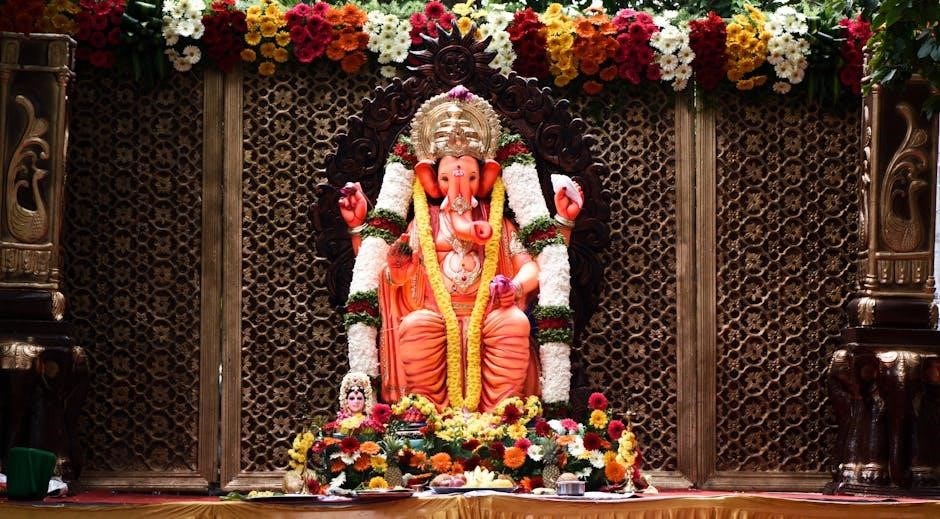
Leadership and power dynamics are pivotal in Lord of the Flies, as the novel explores how authority shifts among the boys. Ralph, elected as the leader, represents democratic values and order, initially maintaining control through the conch shell, a symbol of democracy. However, his leadership fades as the group’s priorities change. Jack, driven by a desire for power and control, gradually gains influence by appealing to the boys’ primal instincts, focusing on hunting and savagery. The struggle between Ralph and Jack symbolizes the clash between democracy and dictatorship. The conch shell’s destruction marks the end of democratic order and Ralph’s authority. The novel highlights how power corrupts, as Jack’s leadership becomes increasingly tyrannical, while Ralph’s inability to maintain control underscores the fragility of leadership in the absence of societal structures. The shifting dynamics reveal the boys’ internal conflicts and the inherent human struggle for dominance and control.
Morality and Ethics
Morality and ethics in Lord of the Flies are central to the novel’s exploration of human nature. The boys’ behavior evolves from adherence to societal norms to a more primal state, revealing the fragility of moral codes without external enforcement. Initially, the group adheres to a basic moral framework, respecting the conch shell and attempting to maintain order. However, as fear and savagery take hold, moral standards deteriorate. The killing of the pig and later Simon and Piggy illustrate the boys’ descent into immorality. The novel suggests that morality is a learned behavior, dependent on civilization and societal structures. Without these constraints, the boys succumb to their darker impulses, highlighting Golding’s pessimistic view of human nature. The erosion of ethics is further evident in the characters’ justification of their actions, demonstrating how easily moral boundaries can be crossed when self-interest and fear dominate.
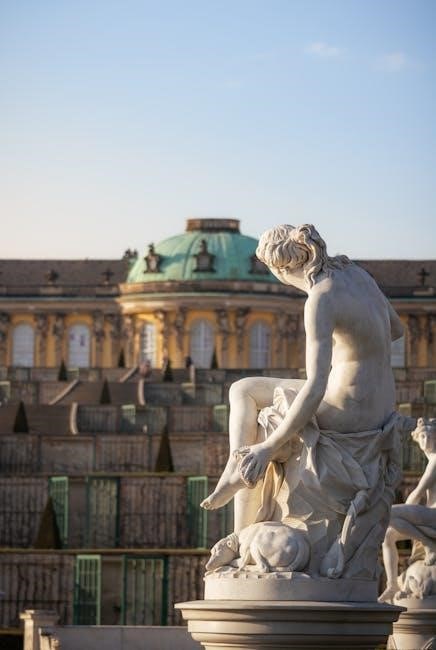
Major Characters in “Lord of the Flies”
Ralph embodies civilization and leadership, while Jack represents savagery and dictatorship. Piggy symbolizes intellect and rationality, Simon personifies innocence and spiritual truth, and Roger reflects sadism and immorality, shaping the novel’s conflict.

Ralph: The Symbol of Civilization and Democracy
Ralph, as the protagonist, represents the ideals of civilization and democracy in the novel. Elected as the leader, he initially embodies order, fairness, and the collective good of the group. His commitment to building shelters and maintaining the signal fire reflects his practical approach to survival and his hope for rescue. The conch shell, which he uses to enforce democratic discussions, symbolizes his belief in equality and justice. However, as the story progresses, Ralph’s leadership is challenged by Jack’s desire for power and savagery. Despite his eventual isolation and the decay of civilization on the island, Ralph remains a symbol of moral integrity and the fight against primal instincts. His character serves as a contrast to the savagery that consumes the others, highlighting the fragility of civilized behavior in the face of fear and chaos.

Jack: The Embodiment of Savagery and Dictatorship
Jack Merridew represents the descent into savagery and the rise of dictatorship in the novel. Initially, he appears as a choir leader, symbolizing order and discipline, but his obsession with hunting and power gradually consumes him. Jack’s desire for control and dominance leads him to abandon Ralph’s democratic leadership, forming his own tribe that prioritizes hunting and primal instincts over civilization. His transformation is marked by his painted face and aggressive behavior, which reflect his rejection of moral constraints. Jack’s character embodies the inherent human tendency toward savagery, as he embraces violence and fear to maintain his authority. The pig’s head impaled on a stake, a symbol of the “Lord of the Flies,” further highlights his connection to primal forces. Ultimately, Jack’s dictatorship and refusal to acknowledge Ralph’s leadership plunge the island into chaos, illustrating the destructive nature of unchecked power and the collapse of civilized norms.
Piggy: The Representation of Intellect and Rationalism
Piggy, with his glasses and rational mindset, symbolizes intellect and the voice of reason among the boys. His glasses, which start fires and signal for rescue, represent the power of science and technology. Piggy’s logical thinking and adherence to moral principles make him a stark contrast to the growing savagery on the island. Despite his physical limitations and lack of charisma, he consistently advocates for democracy, order, and the conch shell’s authority. Piggy’s death, caused by the destruction of the conch shell, signifies the collapse of rationality and civility. His character underscores the importance of intellect in maintaining societal structures and the tragic consequences of its absence. Through Piggy, Golding highlights the fragility of reason in the face of primal instincts and fear, making him a poignant symbol of humanity’s potential for wisdom and order.
Simon: The Incarnation of Innocence and Spiritual Truth
Simon, often portrayed as the moral compass of the novel, embodies innocence, compassion, and spiritual truth. He is the only character who genuinely understands the true nature of the “beast” and the inherent evil within humans. Simon’s solitude and introspection allow him to grasp deeper truths, such as the reality of the beast being a dead pilot, not a monster. His attempt to share this revelation with the others is tragically cut short when he is killed by the boys in a frenzy of fear and savagery. Simon’s death symbolizes the loss of innocence and the destruction of moral truth in the face of primal instincts. Through Simon, Golding highlights the fragility of goodness and the consequences of ignoring wisdom. Simon’s character serves as a poignant reminder of humanity’s capacity for both good and evil, making him a powerful symbol of moral integrity and spiritual insight.


Roger: The Personification of Sadism and Immorality
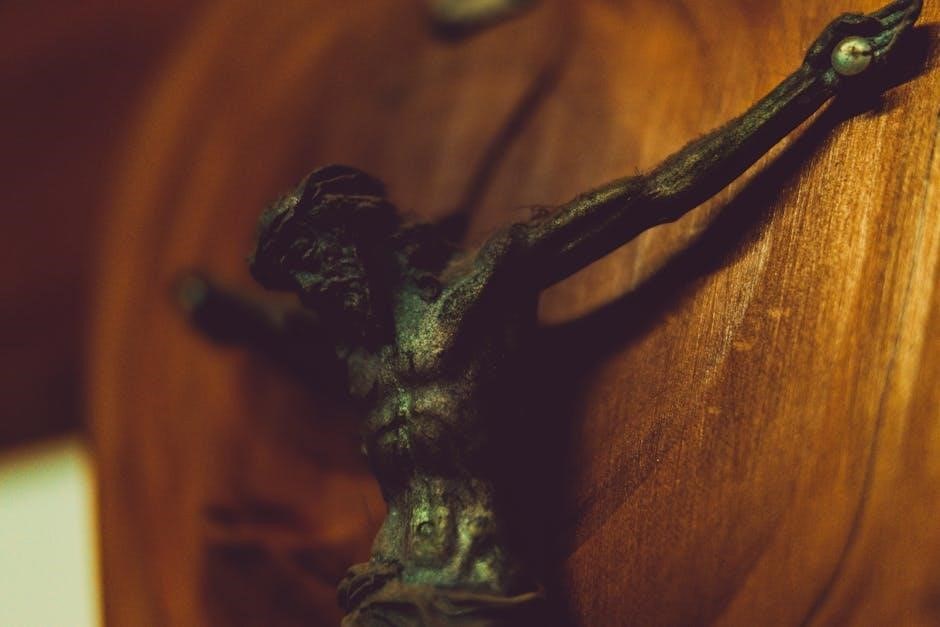
Roger emerges as a symbol of inherent human cruelty and immorality, embodying sadistic tendencies that surface as the boys’ civilized veneer erodes. Initially, Roger appears as a minor character, but his actions reveal a disturbing enjoyment of power and control. His harassment of Henry and later his role in Piggy’s death highlight his descent into savagery. Roger’s actions are driven by a desire to inflict pain, showing how fear and chaos can unleash latent sadism. Golding uses Roger to illustrate how morality disintegrates when societal constraints are removed, allowing darker instincts to prevail. Roger’s transformation reflects the novel’s central theme of humanity’s capacity for evil, underscoring the idea that savagery is not merely learned but inherent. His character serves as a chilling reminder of the consequences of unchecked immorality and the ease with which individuals can abandon ethical principles in the absence of authority.
